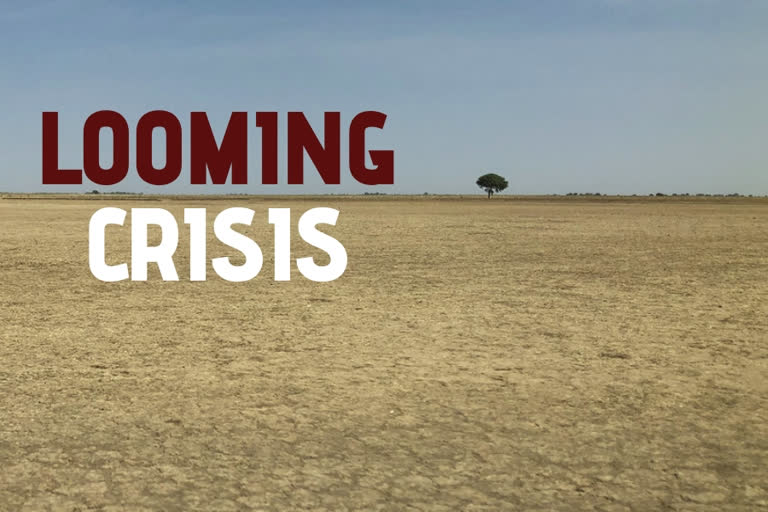Hyderabad: India is facing the growing crisis of land degradation. Over 30% of India’s land area (96 million hectares), has been degraded due to several factors such as deforestation, over-cultivation, soil erosion and depletion of wetlands etc. This land loss is not only eating away India’s gross domestic product by 2.5% every year by affecting its crop yield, but also aggravating climate change events in the country which, in turn, are causing even greater degradation.
Forests are one of the most important solutions to check climate change. But India has lost 1.6 million hectares of forest cover over 18 years to 2018. The government allowed felling of more than 10 million trees in India over five years to 2015. Over 500 projects in India’s protected areas and eco-sensitive zones were cleared by the National Board of Wildlife over the first four years of the Narendra Modi-led National Democratic Alliance government between June 2014 and May 2018. In comparison, the preceding United Progressive Alliance government had cleared 260 projects between 2009 and 2013.
If things continue in the same fashion, 80% of the total farmers in India, who account to be small and marginal farmers will be badly affected in the near future. The agrarian economies like India – which is the world’s largest producer of milk, pulses and jute, and ranks as the second-largest producer of rice, wheat, sugarcane, groundnut, vegetables, fruit and cotton, as per the UN data, will land under the risk of food security. The growth and productivity of pastoral animals (livestock) will also be impacted due to soil erosion and resultant climate change. It was said by none other than Intergovernmental Panel on Climate Change (IPCC), an intergovernmental body of the United Nations studying climate change.
Read: Is excess soil erosion the beginning of food crisis across the globe?
The loss of forest cover had already deprived India 1.4% of its GDP annually, according to a study by The Energy and Resource Institute (TERI), a Delhi-based NGO. Many countries like India, facing a critical issue of climate change, will end up with their land losing its capacity to absorb carbon dioxide (CO2), a greenhouse gas (GHG), which is the major factor worsening global warming. Already, over 1 million species on earth are on the verge of extinction, threatening global food security, largely due to habitat loss and land degradation.
The Indian government had realized that the tribals and other indigenous people, who have knowledge of the local ecosystem, play an important role in protecting the forests. Their involvement in decision-making and governance will ideally help in protecting the eco-system, which encompasses protection of soil erosion, forests and in turn boosts the efforts against climate change. The Forests Rights Act, passed in 2006, could be an excellent tool to check climate actions as the Act recognises the rights of tribes and other traditional forest dwellers to access, manage, protect and govern the forestland and natural resources that they have been using for generations.
But the process of recognition of rights under FRA is very slow. The government has only been able to settle FRA claims over 12.93 million hectares of forests as on April 30, 2019, against a potential of 40 million hectares of forestland across the country. Besides, an ongoing case in the Supreme Court of India also threatens to evict 2 million forest dweller families whose FRA claims have been rejected. Currently, 21 state governments are in the process of reviewing all the rejected claims.
